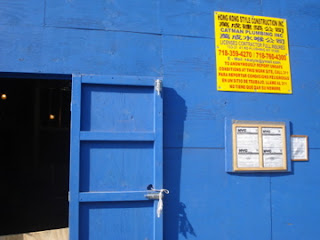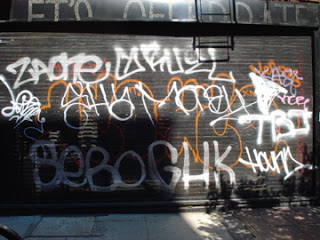The other day - during a bus drive across South Manhattan - I witnessed the conversation of 2 girls of Asian origin who were sitting right behind me. I wasn`t interested and it wasn´t my business, but they spoke very loudly so I couldn´t miss their conversation. But anyway, I didn´t understand much. The girls spoke an mixture of English and Chinese - and this very fast. It seemed to me that the conversation belonged to a language (kind of) which New Yorker´s call Chinglish (wikipedia).
This situation created in my mind the picture of 2 card sets. One set has English words, the other words in Chinese. Someone mixes both sets so that the card game displays a random selection of Chinese & English words.
I don`t suppose that these girls chose their words randomly. They seemed to communicate fluently and to understand each other very well. Their talking seemed to follow a protocol. I guess the ostensible randomness of their choice of English & Chinese words is a method to protect them not just from the curiosity of other bus travelers. I reckon that they use a special language to protect them also from the curiosity of their parents and other older family members.
Usually language is used to communicate, meaning to transport information. But very often language also serves as a method to distinguish from others (ask your doctor or your lawyer). Priests of the Catholic Church used to speak Latin to demonstrate their superiority to the peasants, who spoke English, German or other local languages.
I guess this kind of Chinglish I witnessed - and other language blends like Spanglish (Spanish & English) - has been developed by the sons and daughters of immigrants, the so called 1. generation of immigrants. These kids need a language for their own which is not understood by people who aren`t part of their community. Chinglish is therefore part of life in New York City where many cultures live side by side.



No comments:
Post a Comment